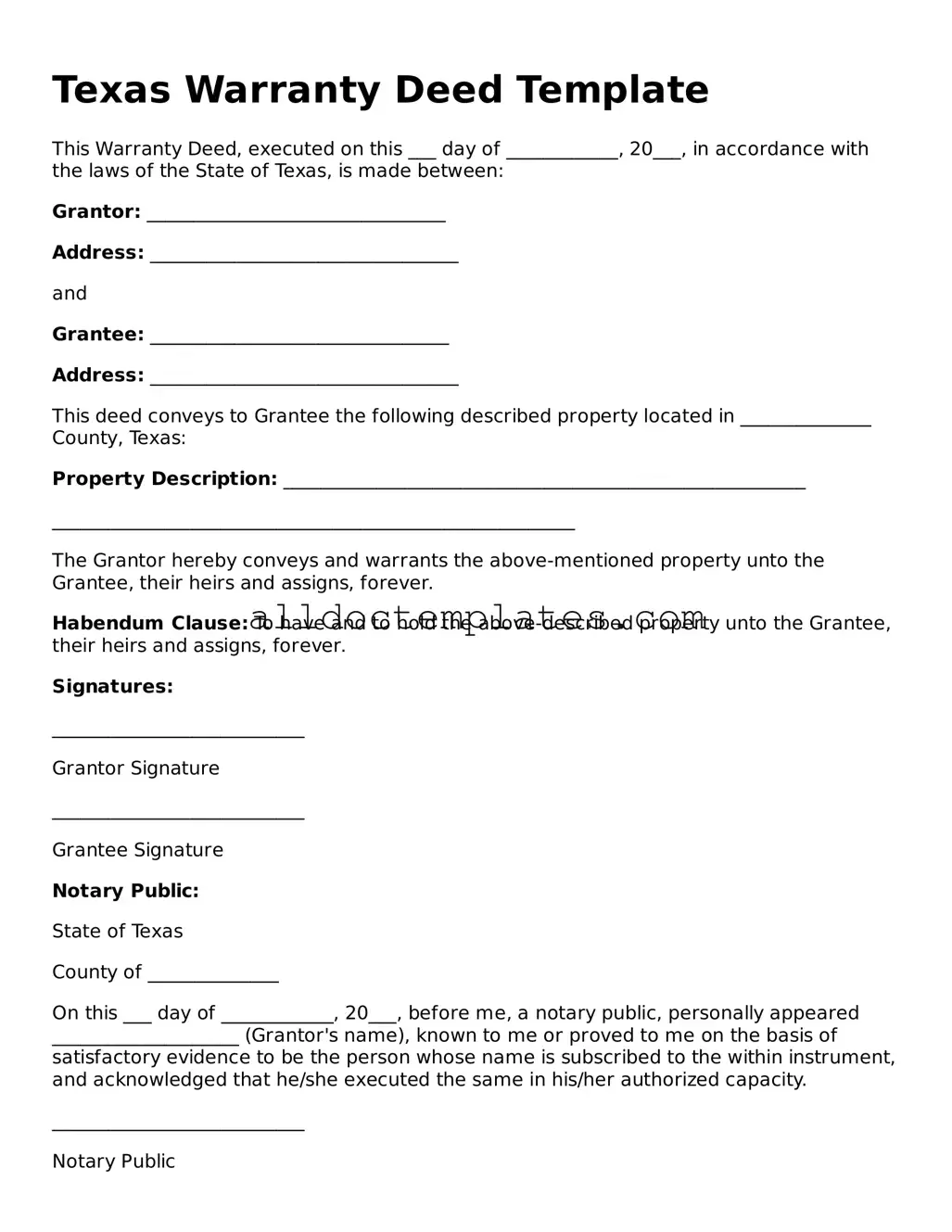Texas Warranty Deed Template
This Warranty Deed, executed on this ___ day of ____________, 20___, in accordance with the laws of the State of Texas, is made between:
Grantor: ________________________________
Address: _________________________________
and
Grantee: ________________________________
Address: _________________________________
This deed conveys to Grantee the following described property located in ______________ County, Texas:
Property Description: ________________________________________________________
________________________________________________________
The Grantor hereby conveys and warrants the above-mentioned property unto the Grantee, their heirs and assigns, forever.
Habendum Clause: To have and to hold the above-described property unto the Grantee, their heirs and assigns, forever.
Signatures:
___________________________
Grantor Signature
___________________________
Grantee Signature
Notary Public:
State of Texas
County of ______________
On this ___ day of ____________, 20___, before me, a notary public, personally appeared ____________________ (Grantor's name), known to me or proved to me on the basis of satisfactory evidence to be the person whose name is subscribed to the within instrument, and acknowledged that he/she executed the same in his/her authorized capacity.
___________________________
Notary Public
My Commission Expires: _______________
